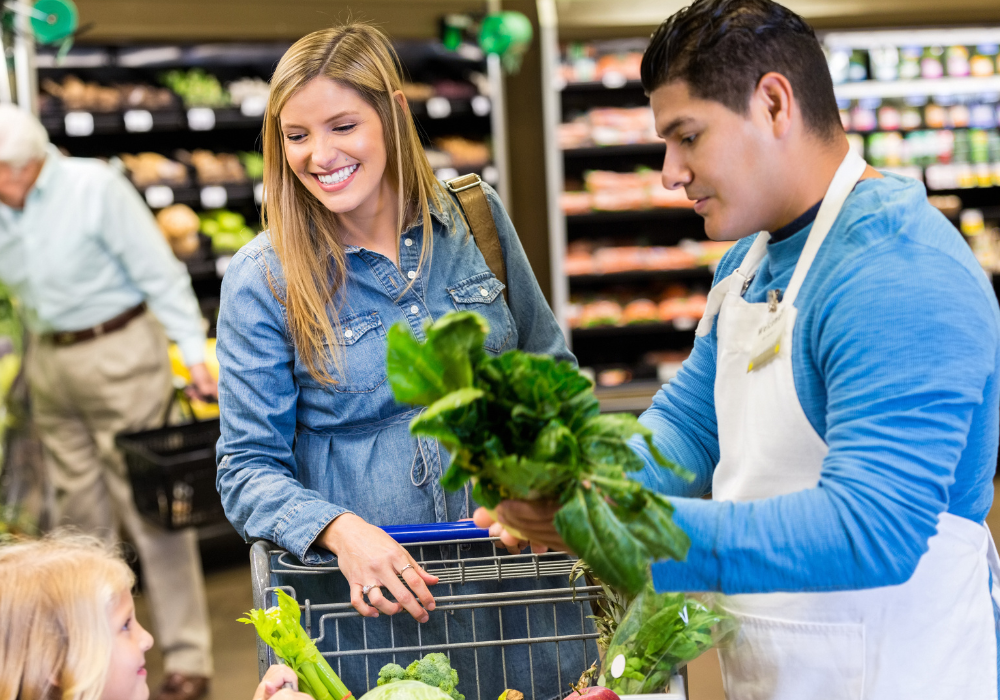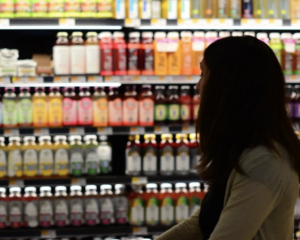
Bringing Back Grocery’s Personal Touch of the Past
Grocery shopping can be an overwhelming endeavor for many shoppers today. In fact, 73% of consumers report feeling overwhelmed in the supermarket. Between an overabundance of choice to attention-grabbing signage and constant shopper communication, finding the right items at the right price can be a challenge for anyone.But this hasn’t always been the norm. Before the industry morphed to become dominated by the largest mega-retailers, grocers were talented at developing personal relationships with their shoppers, which encouraged future spending and fostered loyalty. But what happened to this approach?
While it might seem like the personal touch of grocery’s past is long gone, the truth is it just took a back seat. Today, that personal touch is resurfacing in a new form. Using technology, grocers can replicate a personalized experience. For example, Birdzi’s industry-leading Customer Intelligence Platform integrates analytics, shopper engagement and hyper-personalization to revolutionize the shopping experience.
To understand how we got here, let’s take a look at how grocers have built relationships with their shoppers throughout history.
Understanding Customers Before Technology Got in the Way
Before modern, self-service supermarkets began establishing themselves in the early 20th century, traditional corner stores and markets operated with a behind-the-counter approach, like today’s pharmacies. A customer would hand the clerk a list of items that they wished to purchase, and the clerk would gather the items they had in stock from their inventory
This made it very easy for clerks to form personal relationships with their shoppers. They learned to recognize the people in their community and would cater to their individual tastes and preferences. If Mrs. Jane, who lived two blocks over, always preferred to buy bananas that were barely ripe, a good clerk would know to only provide her with bananas that still had a little green
left on them.
In this way, retailers truly knew their customers, along with their unique tastes and preferences. This fostered a sense of loyalty and commitment to one’s community that made individual shoppers proud to shop at their local corner store and engage with clerks. For retailers, the only way to know their customers was to know who they saw on a regular basis
Technology Spurs the Advent of Loyalty Programs
As modern grocery stores expanded their operations, the development of mini and personal computers in the early 1990s opened new opportunities for grocery stores. Suddenly, data collection and storage became a cost-effective endeavor for retailers to invest in. Grocery stores realized they could give shoppers individual identifiers like a unique barcode on a shopper tag or a phone number.
Now, anytime a shopper made a purchase, the individual items and basket size could be tracked and stored by the retailer. This development made the launch of the first grocery loyalty programs possible. Almost as soon as this data came pouring in, retailers knew they had a goldmine on their hands. Executives and data experts spent enormous amounts of time and effort trying to understand what this data could mean to them.
Conventional wisdom suggested the shoppers who visited most often were a retailers’ best customers and worthy of personal engagement, but as this data analysis developed throughout the 1990s, retailers could visualize that the high-spending visitors, regardless of visit frequency, were incredibly valuable too.
Over time, retailers developed shopper segments to collectively group customers and identify what new products or sales tactics were most effective at encouraging sales. It became a numbers game, and along the way, that unique personal touch of the past was lost.
Today, shoppers at many of the largest grocery retailers exist purely as data points, siloed across broad customer segments that lack the depth needed to truly understand individual preferences
Reimagining Grocery’s Personal Feel With Data-Driven Insights
Many retailers continue to rely on these overarching customer segments to target promotions at shoppers. But because they operate with a divided approach, retailers must rely on brands to fund the discounts they offer customers, limiting the scope and overall effectiveness of these campaigns.
A belief that this has been the foundation of grocery loyalty programs since their advent has prevented retailers from innovating further. However, rapid advancements in data collection, price optimization and artificial intelligence have finally allowed retailers to create true shopper personalization that hearkens back to the level of understanding local corner store clerks had for their customers.
With an advanced shopper analytics platform, grocers can identify which individual products customers most frequently purchase and importantly, what price point entices them. By creating individual customer profiles and opening discounts to the entire store catalog, grocers can provide shoppers with coupons and targeted savings on their most purchased items.
With this approach, retailers would expect and do indeed realize significant gains in basket size and shopping trips. In working with us, our grocery partners have realized 17% average basket size increases along with eight percent increases in customer shopping trips.
If grocers want to stand out even further, they can combine personalized savings with
individualized offerings and services that inspire a unique sense of loyalty.
For example, a retailer can utilize generative AI to send a shopper personalized communications and outreach, pulling in details from their spending history and shopper profile to provide a level of individualization not possible with a segmented approach.
Move Forward by Embracing Grocery’s Past
In this way, data now serves as the foundation for truly personal relationships with today’s shoppers. While it may look a little different than it did in the past, it’s now possible for retailers to develop unique, individual relationships with their customers once more.
If this sounds like a future worthy of your loyal shoppers, reach out to us today to learn how Birdzi helps retailers across the country develop truly personal customer relationships.
Sign up for Updates
Stay current on the latest happenings at Birdzi!
"*" indicates required fields
Related Posts


Request a 1-on-1 Demo
There’s no substitute for seeing Birdzi’s capabilities first-hand with a seasoned expert to answer all your questions.
"*" indicates required fields

